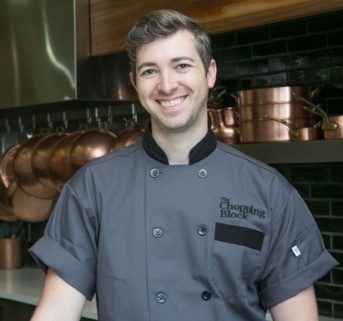Knives are arguably the most essential kitchen tool any cook will use. Even more so than pots, pans or even a stove. There are plenty of dishes made without the application of any heat, but dishes that are made without any cutting are very few and far between.
In the world of knives, there are a handful of usual suspects that most home cooks have at least seen before even if they haven’t necessarily used them. I think if they had to the majority of people who have even marginal experience in the kitchen could pick out a chef's knife from a lineup. They could also probably recognize a serrated/bread knife, a paring knife, a European-style slicing knife, and maybe also boning and utility knives, even if they don’t necessarily know them by name.
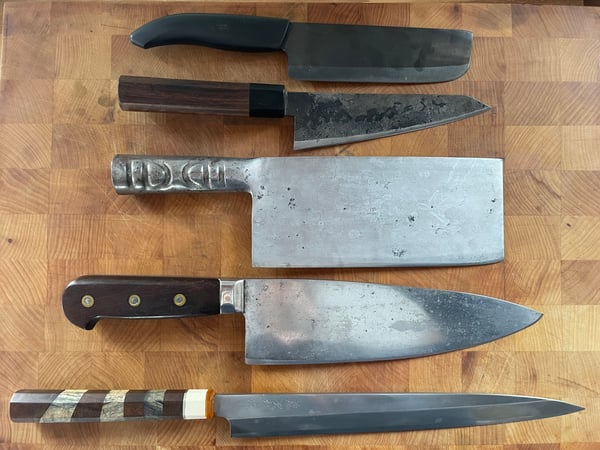 However, the world of culinary cutlery goes far far deeper than the handful of most common kitchen knives. In this post, I’ll take you on a little tour of a group of my most commonly-used, least-common kitchen knives. Maybe you’ll find something to try that you didn’t know you needed.
However, the world of culinary cutlery goes far far deeper than the handful of most common kitchen knives. In this post, I’ll take you on a little tour of a group of my most commonly-used, least-common kitchen knives. Maybe you’ll find something to try that you didn’t know you needed.
Chinese Cleaver
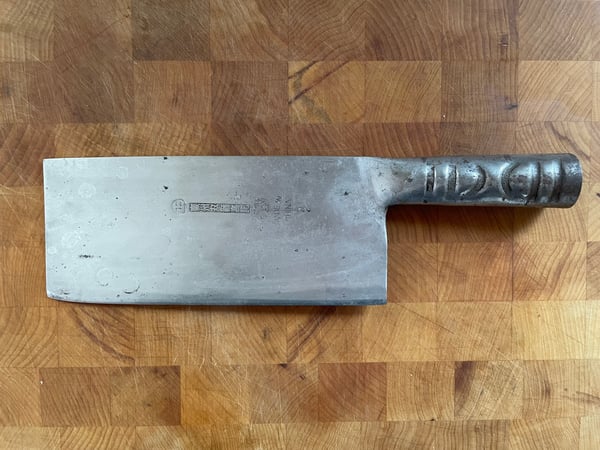
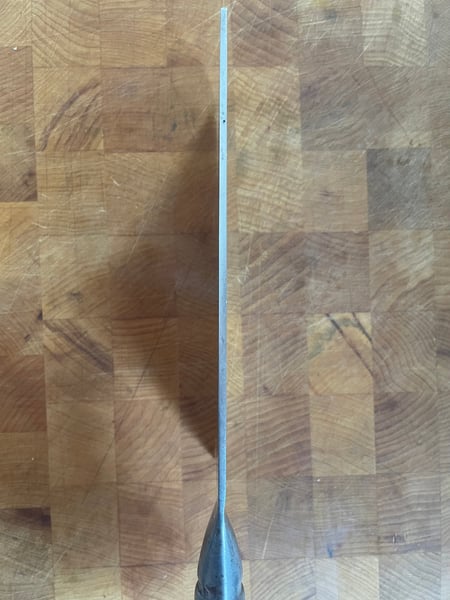
While many folks may be familiar with a Western-style butcher's cleaver, the Chinese counterpart is used in a very different way. While a butcher's cleaver is meant for chopping through small bones, and is used pretty much exclusively for butchery, the Chinese cleaver functions as a Chinese cook’s chef knife. Chinese cooking sees the cleaver used for just about everything from chopping vegetables, to slicing protein, to mincing, and everything else in between.
Though it may seem unwieldy at first due to its height and blade size, a Chinese cleaver can actually be quite nimble once you’ve gotten used to how it handles. The blades are frequently quite thin and lightweight which allows them to be used with maximum dexterity. The generous width of the blade allows for actions a European chef knife would struggle to perform like smashing ginger or many cloves of garlic at once. While the squared off blade shape makes it easy to keep track of where you’re cutting, you can also use the extra blade real estate to scoop large amount of prepped ingredients off your cutting board like you would with a bench scraper. Overall, this is a hugely versatile knife that can be useful to many home cooks even if they don’t make Chinese food very often.
Honesuki
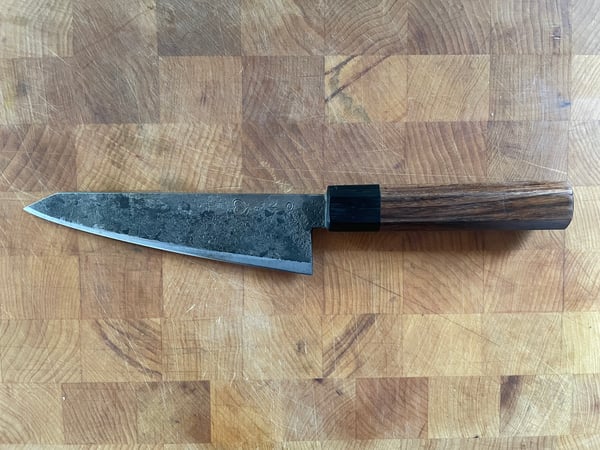
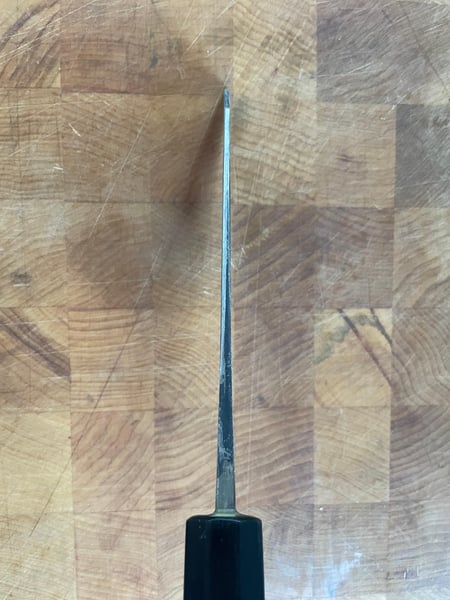
This is a Japanese-style of boning knife. This particular shape is designed for breaking down poultry of moderate size (chicken, duck, turkey, goose, etc.). The Japanese approach to boning knives is in many ways the opposite approach that European-style boning knives take. Rather than long-ish thin blades with a good amount of flexibility, Japanese boning knives are short, very stiff, and typically quite thick at the spine. This makes them very good at precise, clean, straight cuts even if part of the cut goes through small bones, and allows them to excel at multiple butchery tasks, not just removing bones.
The honesuki (pronounced hoe-ness-kay) has a distinctive triangular shape which provides tremendous strength behind the heel of the blade, while keeping it very precise and nimble at the tip. It can easily chop through most bird bones, and also perform delicate trimming tasks with ease. In my opinion, there is no knife better at breaking poultry quickly and cleanly.
Nakiri
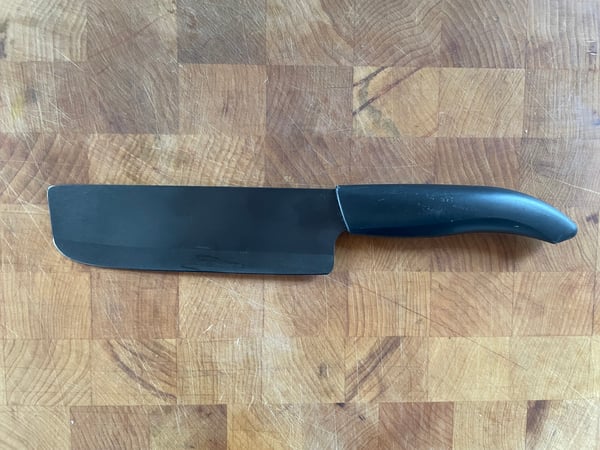
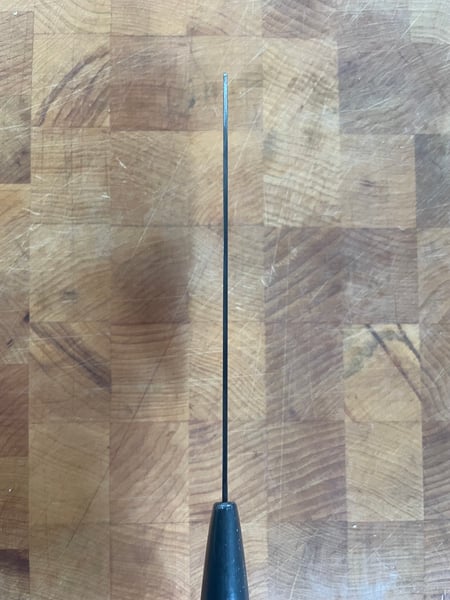 Perhaps the most underrated knife you’re likely to encounter. The nakiri is almost as versatile as a chef's knife, but really excels at vegetable work. The square tip allows for unsurpassed visibility which means you can cut more intuitively with less managing of the knife. Ultimately a nakiri allows you to get through you veggie prep work more quickly and accurately than any other style of knife. Not to mention its more compact size makes it a more approachable knife for those with smaller hands, or who find long knives cumbersome, difficult, or intimidating to work with.
Perhaps the most underrated knife you’re likely to encounter. The nakiri is almost as versatile as a chef's knife, but really excels at vegetable work. The square tip allows for unsurpassed visibility which means you can cut more intuitively with less managing of the knife. Ultimately a nakiri allows you to get through you veggie prep work more quickly and accurately than any other style of knife. Not to mention its more compact size makes it a more approachable knife for those with smaller hands, or who find long knives cumbersome, difficult, or intimidating to work with.
This particular nakiri has a blade made from ceramic. While I wouldn’t necessarily recommend a ceramic knife because of their substantial drawbacks (they chip easily, have to be sent away for sharpening, don’t hold an edge particularly well, are really only good for certain low impact tasks, and can’t hang on a magnetic knife strip), they also have a number of benefits. They will never rust, they are incredibly lightweight and nimble (some folks might consider this a drawback as well), and they can get extremely sharp because the material is so hard. For these reasons if you want to try working with a ceramic knife, I don’t think there’s any better candidate than the nakiri. This knife is mainly meant for slicing and chopping tender vegetables, which is exactly the wheelhouse of a ceramic knife as well.
Yanagi
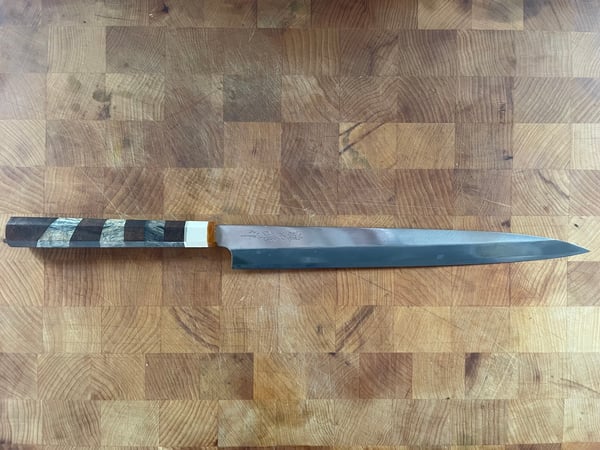
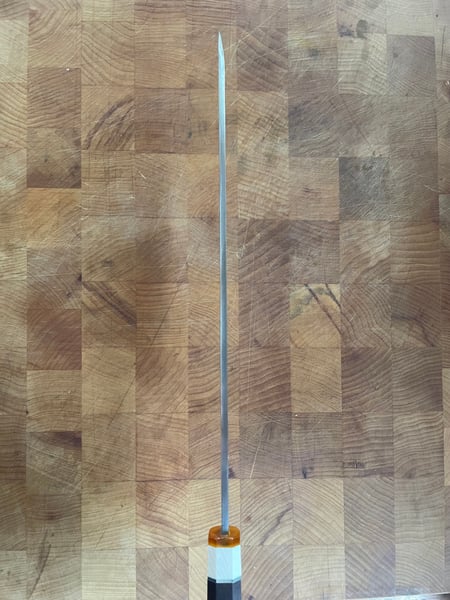 While this may look very similar to a European-style slicer, and it is meant for the same task (slicing proteins of various types), there are a few design differences that set the yanagi apart significantly. The most noticeable difference is that yanagi are single bevel. This means that instead of having the edge ground evenly from both sides of the blade like most knives Westerners are familiar with, yanagi (like all traditional Japanese knives), are ground only on one side while the opposite side is (pretty much) flat. This not only makes them a breeze to sharpen, but allows them to take an incredibly fine edge that is more durable than it would be on a more typical 50/50 grind blade.
While this may look very similar to a European-style slicer, and it is meant for the same task (slicing proteins of various types), there are a few design differences that set the yanagi apart significantly. The most noticeable difference is that yanagi are single bevel. This means that instead of having the edge ground evenly from both sides of the blade like most knives Westerners are familiar with, yanagi (like all traditional Japanese knives), are ground only on one side while the opposite side is (pretty much) flat. This not only makes them a breeze to sharpen, but allows them to take an incredibly fine edge that is more durable than it would be on a more typical 50/50 grind blade.
Yanagi can also be much longer than a typical slicing knife. This one pictured has a blade that measures about a foot. This allows for more versatility in the slicing stroke, and allows you to cut all the way through proteins in one stroke without having to press down on the knife nearly at all. This allows unparalleled quality of slicing. No sawing, no squishing, just perfect cuts. Yanagi are also quite thick at the spine making them very stiff. This again allows for more perfect, straighter, higher fidelity cuts. While working with a single bevel blade takes a bit of getting used to, there is no denying that this is perhaps the world's best slicing knife design.
Hybrid Splitter/Chef
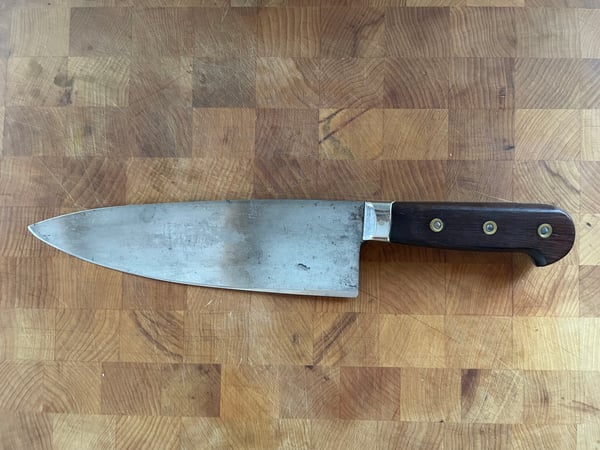
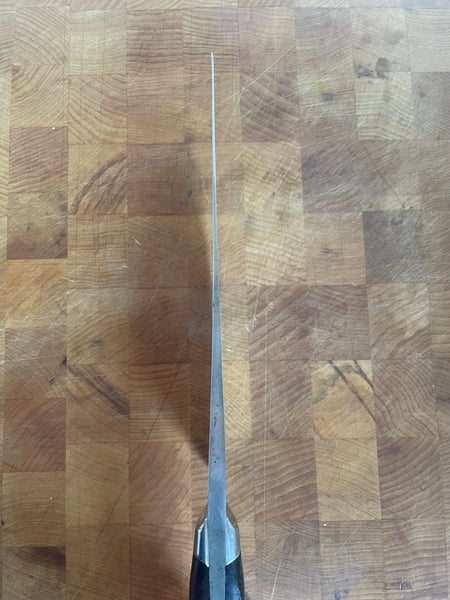 Perhaps the most unusual knife I own. This particular specimen was probably made in the early decades of the 20’th century. It is extremely thick at the spine near the handle allowing it to be used to chop through lobster shells, hard gourds, and even large bones (I’ve chopped clean through pork ribs with it in one stroke). However it tapers towards the tip such that the front half of the blade is thinner and more flexible than most European-style chef knives are along their entire length. While it is a bit heavy, and the extreme taper makes the handling a bit unusual, there is no denying this knife can do just about any kitchen task imaginable in the right hands.
Perhaps the most unusual knife I own. This particular specimen was probably made in the early decades of the 20’th century. It is extremely thick at the spine near the handle allowing it to be used to chop through lobster shells, hard gourds, and even large bones (I’ve chopped clean through pork ribs with it in one stroke). However it tapers towards the tip such that the front half of the blade is thinner and more flexible than most European-style chef knives are along their entire length. While it is a bit heavy, and the extreme taper makes the handling a bit unusual, there is no denying this knife can do just about any kitchen task imaginable in the right hands.
If all this kitchen cutlery talk has you wanting to up your own knife skills, and learn some things that will introduce you to some less common types of knife, I recommend checking out our upcoming Fish Butchery and Cookery class.
And if you are just getting started with basic knives, our Knife Skills class is the best place to start because you get to test drives the knives we have in our kitchens or get guidance using your own knives virtually. Sign up for one of the following upcoming sessions:
- Thursday, April 6 6pm
- Wednesday, April 12 6pm
- Saturday, April 22 10am
- Virtual Knife Skills Sunday, April 23 11am CST
Happy cutting!


